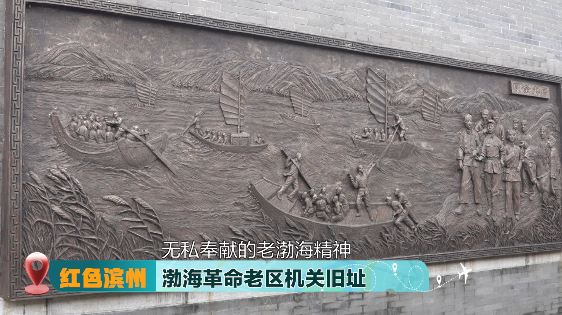Statium lamp | Cantonese cuisine with different flavors can not only be used as geographical concepts
Author:Crystal report Time:2022.09.27
■ Lin Weihui: Gourmet writer, food documentary consultant
Regardless of whether the "Four Causca Department" formed by the early Qing Dynasty, or the "Eight Crepees" of New China, Cantonese cuisine was "unified" as a major category. In fact, this classification method with geographical concepts is a bit simple and rude. Traditionally, Cantonese people are composed of Guangfu people, Chaoshan people, and Hakkas. Everyone has their own customs, and the products of the place of residence are also different. And Hakka cuisine.
Highlights of Guangfu cuisine
Cantonese cuisine in the narrow sense refers to the Guangfu cuisine. The so -called Guangzhou government refers to the place under the jurisdiction of the Guangzhou government during the Qing Dynasty, including the Shunde, Nanhai, and Panyu at that time. Wait. Guangfu cuisine, Nanhai cuisine, Panyu cuisine, Dongguan cuisine, Shunde cuisine, Zhongshan cuisine, Wuyi cuisine and other local flavors. Complete family. The ingredients pay attention to fresh and fierce, cooking and talking about "镬", the combination of Chinese and Western techniques, the taste is light, the taste of the ingredients is expressed. On this basis, there are some different performances in Guangfu cuisine from all over the Pearl River Delta.
Nanhai cuisine and Panyu cuisine are the main force of Guangfu cuisine. The early Qing Dynasty was an important period for the formation of the re -system of Guangfu cuisine. The late Qing Dynasty and the early Republic of China were the highlights of Guangfu cuisine. At that time, the Guangzhou urban area was divided into the jurisdiction of the Nanhai County and the Panyu County. The Nanhai businessmen almost monopolized the teahouses of Guangzhou.
"Eat in Guangzhou, the kitchen is out of Fengcheng", which is famous for exporting the chef's Shunde, not only provides a large number of chefs for Guangfu cuisine, Shunde flavor vegetables also greatly enrich Guangfu cuisine, Daliang cow, double -skinned milk, ginger ginger Back milk, Daliang Sands, Lunjiao cakes, Chencun Fan, etc. The Shunde cuisine, who is good at cooking family fish, is also the "benefits" of Guangfu cuisine. Today, Shunde cuisine with precision to seconds and fine Shunde cuisine is popular. If in Guangdong, it is difficult to understand the "fine" and "wonder" of Guangfu cuisine.
The standard Zhongshan cuisine, which is based on "tender or crispy", is also a unique one in the Guangfu cuisine. There are many specialty foods and food culture. Zhongshan cuisine is divided into four major genres. "Mintian area dishes" such as Shaxi and Da Chong, which pays attention to color, fragrance, taste, and shape. The taste is tender or crispy. The masterpiece is "three treasures of Shaxi": the hometown buckle meat, Qing tender white cut cut Chicken and taste duck; "Shatian region dishes" such as ports and people, pay attention to afford, wake up stomach, take ingredients on the spot, eggplant salted fish pots, shrimp sauce fried cabbage, fried field snails, etc. are all representative works; The "Xiaolan area dish", which is the main material for planting water products, originates from Xiaolan. It pays attention to the knife skills, crispy and crispy, and the representative works are fried fish balls, shrimp balls, chrysanthemum meat and so on. The "Wuluishan District" has a strong flavor of oil and is durable and not easy to deteriorate. Beef tofu, flavor beef balls, etc. are all masterpieces. The Master of Zhongshan Cantonese cuisine represented by Mai Guangfan and Oujin and Ou Jinhe also brought in Hong Kong -style Cantonese cuisine and carried forward, bringing Hong Kong and Macao genes and flavors to Zhongshan cuisine.
The sweet Dongguan dishes are divided into hills, Putian, water villages, coastal films, etc., and each represents food. Ning crab yellow porridge, mountain slices with Zhangmutou Dongjiang salted chicken. Houjie Setan, Houjie Saushu, Baisha Oil Duck, Humen Ma Shrimp, Humen Catal Crab, Tongjia Rongzi, Dongguan Rice Powder, Dao Tao Wrap Steamed and Porkball Porridge, Mattoltanose, Grapefruit Skin, and Lotus Roots of Sugar Pomelo, Shatian's lotus root The hibiscus meat and taro poles of Shijie, Takayuka's 冼 、 、, Changan's blackhead fish and other characteristics have their own characteristics. Wanjiang, Daoyu, Gao Yan, Zhongtang, Hongmei, Shatian, Changan, Humen, Ma Yong and other places are famous for cooking river seafood. In the Putian tablets in Shiqu and other places, they use their own tempeh and bean sauce as condiments, and they are very delicious to mix fish, meat, shrimp, crab melon vegetables; As long as you can think of it, you can use "brew".
Wuyi, the Xinhui, Taishan, Kaiping, Enping, and Heshan five cities (districts) under the jurisdiction of Jiangmen City. The biggest feature of Wuyi cuisine is that the farmhouse is full of taste. It takes materials on the spot. The simple and simple style is its biggest feature. Enping's amaranth cooker catfish, Du Ruan's cold melon, Magang paparazzi, Taishan Huangya rice, none of them, all of them. That's not the case. As a famous overseas Chinese hometown, most of the Cantonese cuisine in North America is Master Wuyi. And the combination of China and the West, very distinctive.
Three characteristics of Chaozhou cuisine
Chaozhou cuisine includes local dishes in Chaoshan dialect in Shantou, Chaozhou, and Jieyang. In addition to the location of these three prefecture -level cities, it also includes all lectures on Chaoyang, Puning, Rao Ping, South Australia, Huilai, and Haifeng, Lufeng and other cities. The place where Chaoshan dialect is included.
Chaozhou cuisine is famous for cooking seafood. It is sophisticated to cook the cooking of seafood, produces finely, and uses sauce plates to achieve fresh and delicious. Such as the crab, the furnace burning snail, the raw cooking lobster, the red stewed shark fin, the church -boiled abalone slices, the stewed black ears, the raw porridge grass fish, etc., which is a masterpiece of Chaozhou seafood; the second feature of Chaozhou cuisine It is "rough vegetables", crude fiber mustard, through long -term stew, fiber break, adding dried shrimp pork belly and shiitake mushrooms, it is a delicious "thick mushroom big mustard pot"; Guangfu people are called cold melon. Bitter gourd, stewed soup fried egg fried meat and sauces are already colorful. Chaoshan people use pork belly for a few hours to slowly release the bitter gourd alkaloids. The fat decomposes them. The charming "bitter gourd meat pot"; a pile of meat, in the hands of Chaoshan people, plus two iron rods, beat Q bombs meatballs; thick sweet potatoes, Chaoshan people smashed it to add water and extract them. Dry the pink water and dry it into delicate sweet potato flour, which evolves oyster, loofah, and clams. This is simply the "molecular dishes" of Chaoshan people. ; The third feature of Chaozhou cuisine is the pursuit of soft taste, more soup and water. In addition to soup, there will be other soup dishes. Compared with Guangfu cuisine, it is also a casserole. Most of the Guangfu cuisine is thick juice, while Chaozhou cuisine is a variety of thick soup and soup. Chaozhou cuisine is rare and crispy. On the contrary, soft rotten is appreciated. Even vegetables have been stewed for a long time, and must be made into soft rotten. Mustard and bitter gourd are dealt with. This is the same, and the people who eat it also praise "䪏䪏, good death!" (Soft and rotten, so good!)
Hakka cuisine includes Meijiang, Dongjiang, and Beijiang Basin. Residents are distributed in the mountains. Hakka cuisine has inherited the Central Plains food culture. The new ingredients and habits of the Hakkas have unique flavors that integrate the essence of various places after the southward relocation. Hakka cuisine has the characteristics of "salty, cooked, and fragrant", which is inseparable from the characteristics of Hakka people's many mountainous areas. Hakkas in history are cultivated and sowed, and physical consumption is large. Essence In the age without a refrigerator, salted vegetables can be stored for a long time.
Hakka cuisine can be subdivided into "mountain system" and "water system". The mountain system is what we call "Hakka cuisine". It is distributed in mountainous areas and other places in Meizhou. Shanxian Hakka cuisine maintains a strong native taste and the original umami taste of ingredients. "The vegetables are mainly in Huizhou and Heyuan, including Huidong, Boluo and other places. These places are mostly in the Dongjiang River Basin. The source of the ingredients is to eat mountains and water, and the water is near the river and the sea. There are many aquatic products naturally using the ingredients. Pay attention to the strong fragrance, heavy oil, salty, and the casserole dishes are long, and the rustic atmosphere is strong. Hakka cuisine is good at cooking vegetarian dishes and odors. All kinds of coarse grains and animal organs can also be deductible. Salted chicken, steamed chicken, tofu, red -roasted meat, whole pig banquet, and whole beef feast. Opportunity to taste the wild osmanthus, catfish and stone catfish, the meat is smooth, sweet and sweet, without mud, simplicity is the gift of nature.
Cantonese people can eat and like to eat. Although they are all Cantonese cuisine, Cantonese cuisine in various places is so different. This is the wonderful and charming side of the South Guangdong land.
Source | Jingbao APP
Edit: Chen Jianguo
- END -
Red Binzhou -Old Site of the Old Authority of the Bohai Revolution

On the Bohai Bay, the Yellow River's shore, Binzhou has always been a city full of...
Ten years of preparations for ten years to wave Akrod's "England History Sixth Ministry" introduced and published | New Book Shelf

Cover news reporter Zhang JieReading history is wise. In September 2021, the last ...
